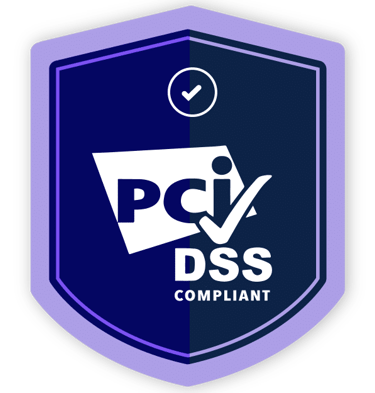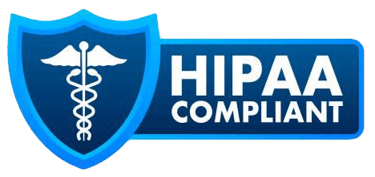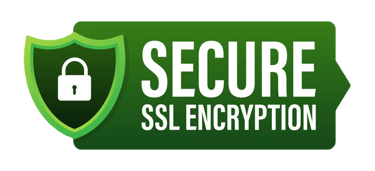Emergency Preparedness Plans for Hospice and Home Health Agencies: Appendix Z Simplified
A comprehensive guide to Appendix Z compliance for hospice and home health agencies, explaining emergency preparedness requirements.
The Centers for Medicare & Medicaid Services (CMS) mandates that all Medicare-certified providers—including hospice and home health agencies—maintain comprehensive emergency preparedness programs. These requirements, found under Appendix Z of the State Operations Manual, are not simply bureaucratic obligations; they are vital frameworks designed to ensure that agencies remain operational, safeguard patient lives, and support community resilience during disasters.
This article breaks down the core elements of Appendix Z, explains how they align with the Medicare Conditions of Participation (CoPs), and provides practical steps for agencies to maintain compliance while protecting patients and staff.
Understanding Appendix Z and Its Purpose
Appendix Z outlines CMS’s Emergency Preparedness Final Rule, which applies to 17 provider and supplier types, including hospice and home health agencies. Its core objective is to ensure that healthcare organizations can effectively plan for, respond to, and recover from emergencies that disrupt normal operations—whether these emergencies are natural, technological, or man-made.
CMS emphasizes an “all-hazards approach,” meaning agencies must plan for a wide range of potential emergencies, from wildfires, earthquakes, and pandemics to power outages, cyberattacks, and community-wide evacuations.
The rule ensures that patient care continuity, staff safety, and coordination with local authorities remain at the forefront of any emergency plan.
The Four Core Elements of Appendix Z
Every hospice and home health agency must establish an emergency preparedness program built on four pillars:
1. Risk Assessment and Planning
Agencies must conduct an all-hazards risk assessment that identifies likely threats to their operations. In California, for example, common risks include wildfires, earthquakes, power outages, and severe heat.
This assessment forms the basis for developing a written Emergency Preparedness Plan (EPP) that includes:
Identification of specific risks to patients and staff
Procedures for sheltering in place or evacuation
Communication strategies for notifying families, staff, and emergency services
Prioritization of high-acuity and oxygen-dependent patients
Maintenance of essential supplies and medications
The plan must be reviewed and updated at least annually and whenever significant operational changes occur.
2. Policies and Procedures
Based on the risk assessment, the agency must develop and implement detailed policies that outline how it will respond to identified hazards.
For home health and hospice, these policies should address:
Continuity of operations, including leadership succession
Evacuation routes, relocation sites, and transportation arrangements
Documentation of patient care during emergencies
Staff assignments and responsibilities during activation
Protection of patient records (both paper and electronic)
Supply chain management, including oxygen vendors and pharmacy access
Patient triage and care coordination for those in life-sustaining treatments
These procedures must be accessible to all staff and incorporated into the agency’s policies and procedures manual to meet 42 CFR §484.102 (Home Health CoPs) and 42 CFR §418.113 (Hospice CoPs).
3. Communication Plan
Clear and reliable communication is the backbone of any emergency response.
CMS requires agencies to establish a multi-channel communication plan that ensures:
Contact information for all staff, patients, and next of kin is current
The agency can contact local emergency management, public health departments, and utility companies
HIPAA-compliant communication is maintained even during outages
Staff receive timely instructions and updates
Back-up systems (cell, email, or satellite communication) are available
The communication plan must integrate with the Incident Command System (ICS) and the National Incident Management System (NIMS), ensuring coordination with broader local, state, and federal response networks.
4. Training and Testing Program
A plan is only as strong as the people who execute it. CMS mandates that agencies:
Conduct initial and annual emergency preparedness training for all staff
Include training on each staff member’s specific role during an emergency
Maintain documentation of all training and competency verification
Test their plan through two annual exercises:
Full-scale community-based exercise or facility-based functional exercise
Tabletop exercise (discussion-based scenario)
Following each exercise, the agency must conduct an After-Action Review (AAR) and update its plan to address identified gaps. Documentation of these activities is a frequent focus of CMS surveyors and state inspectors.
Key Requirements Under the Medicare Conditions of Participation
The Emergency Preparedness CoPs are integrated into each provider type’s regulations:
Home Health Agencies: §484.102 – Emergency Preparedness
Hospice Agencies: §418.113 – Emergency Preparedness
To comply with these CoPs, agencies must demonstrate:
A written all-hazards emergency preparedness plan
Documented staff training and testing
Policies for continuity of operations and patient care
Active participation in community emergency management efforts
Surveyors will verify compliance through:
Review of written plans and risk assessments
Staff interviews regarding emergency roles
Observation of emergency drills and responses
Non-compliance can result in deficiency citations, corrective action requirements, and in severe cases, loss of certification.
Practical Implementation Tips
1. Customize Your Plan to Your Service Area
An emergency preparedness plan should reflect local realities. A hospice agency in Los Angeles faces different risks than one in rural Northern California. Use resources from local emergency management agencies and public health departments to tailor your plan accordingly.
2. Keep Contact Lists Updated
Maintaining accurate contact lists for staff, patients, vendors, and local emergency services is critical. CMS expects agencies to be able to demonstrate that these lists are reviewed and verified at least quarterly.
3. Integrate with Community Response Systems
Build relationships with:
Local fire departments and police departments
Public health and emergency management agencies
Long-term care coalitions and healthcare preparedness networks
These partnerships facilitate faster response times and coordinated evacuations when disasters strike.
4. Protect Medical Records and Data
Ensure all EMR systems are backed up securely. Agencies should have access to redundant cloud-based storage or offsite backups to maintain patient care documentation even if systems fail.
5. Conduct Mock Drills and After-Action Reports
Simulated scenarios—like power outages, fires, or cyberattacks—are invaluable for testing response capacity. After every drill, document:
What went well
What challenges occurred
What improvements will be implemented
This continuous improvement process demonstrates proactive compliance with CMS quality and safety expectations.
Common Survey Deficiencies and How to Avoid Them
Surveyors frequently cite agencies for:
Incomplete risk assessments or failure to document local hazards
Outdated emergency contact lists
Lack of annual training or drill documentation
Failure to maintain communication with local emergency officials
Missing after-action reports following exercises
To avoid deficiencies:
Review Appendix Z annually and ensure updates are reflected in your policy manual.
Document every drill, training, and plan revision.
Keep your governing body and QAPI committee involved in approving and reviewing the plan.
Emergency Preparedness in Practice
When disasters occur, hospice and home health agencies play a unique role—they care for medically fragile patients in their homes or residential settings, often without immediate hospital access. A strong emergency plan ensures:
Staff can reach patients even when roads are closed
Backup oxygen and power supply arrangements are available
Families are educated on what to do if services are temporarily disrupted
The agency maintains accountability and compliance throughout the event
For example, during the 2020 wildfires in California, compliant agencies were able to relocate hospice patients quickly, preserve medication storage, and maintain care continuity—all due to proactive Appendix Z compliance and planning.
Integrating Emergency Preparedness into QAPI
Emergency preparedness is not an isolated requirement; it connects directly to the Quality Assurance and Performance Improvement (QAPI) program.
Agencies should:
Include emergency preparedness as a standing QAPI focus area
Monitor performance indicators such as staff response time, patient safety outcomes, and documentation accuracy during drills
Report findings to the governing body for oversight and improvement
This integration demonstrates a culture of continuous improvement—one of the core expectations under CMS CoPs.
Final Thoughts
An effective emergency preparedness plan is more than a regulatory checkbox—it’s a lifeline. It ensures that hospice and home health agencies remain reliable pillars of care, even under the most challenging circumstances. By aligning with Appendix Z and maintaining compliance with the Medicare Conditions of Participation, agencies safeguard not only their operational integrity but also the trust of the patients and families they serve.
For agencies seeking expert guidance in developing, updating, or testing their Emergency Preparedness Plans, HealthBridge offers comprehensive consulting and management solutions. From conducting all-hazards risk assessments to designing compliant policies, staff training, and full-scale mock survey readiness, HealthBridge ensures that your agency meets every federal and state emergency preparedness standard with confidence.







